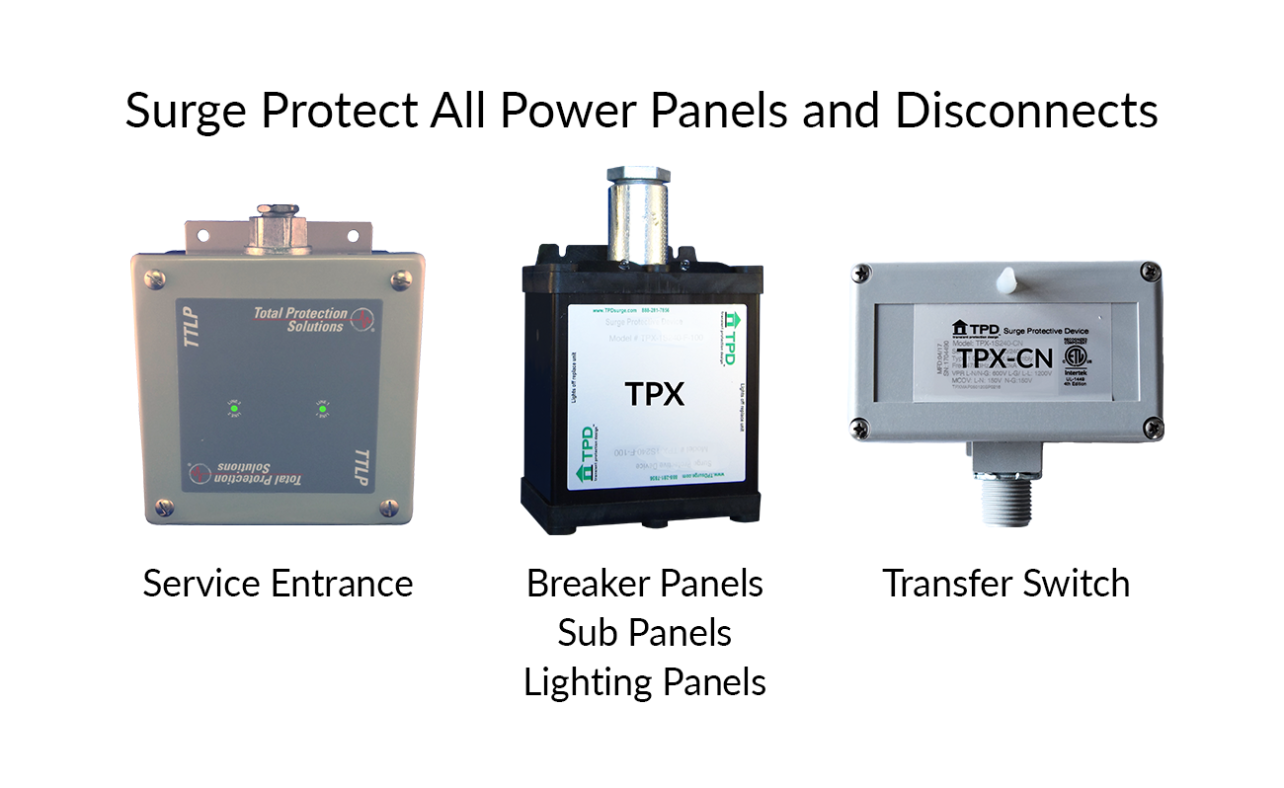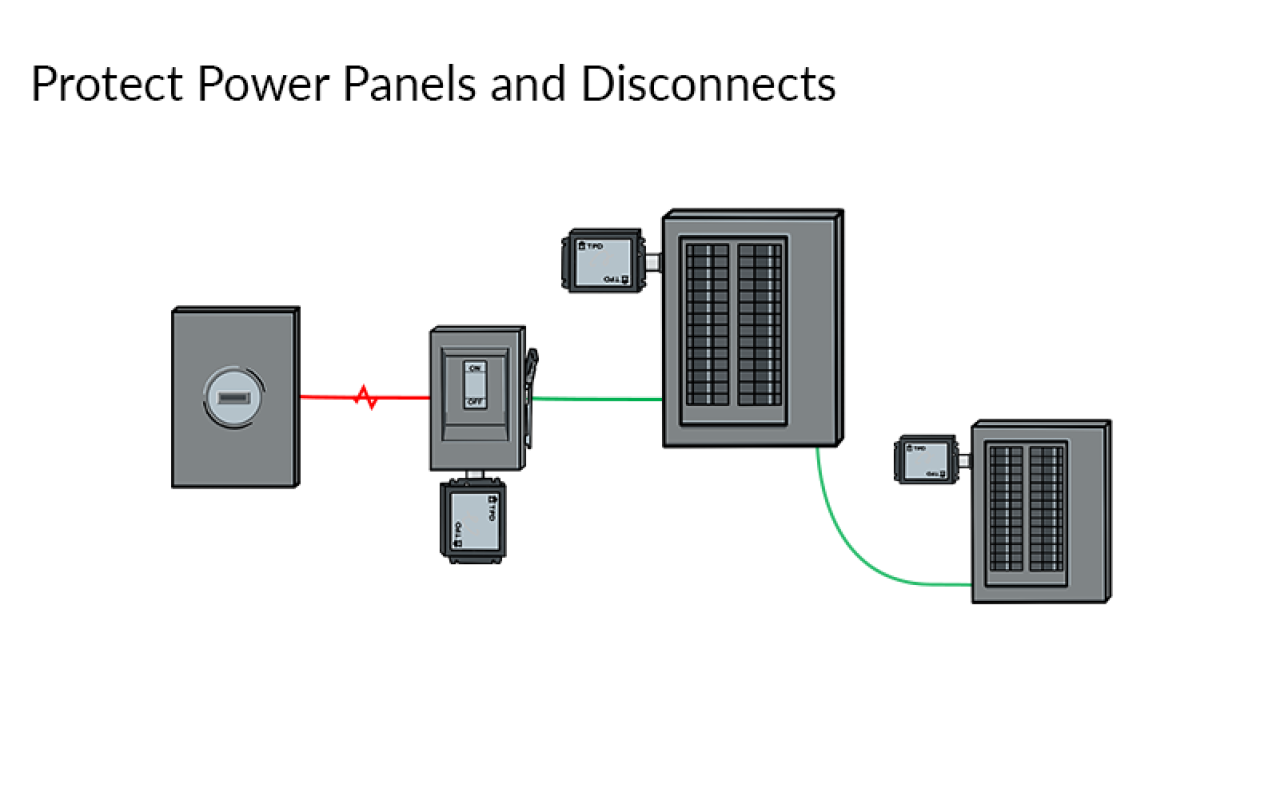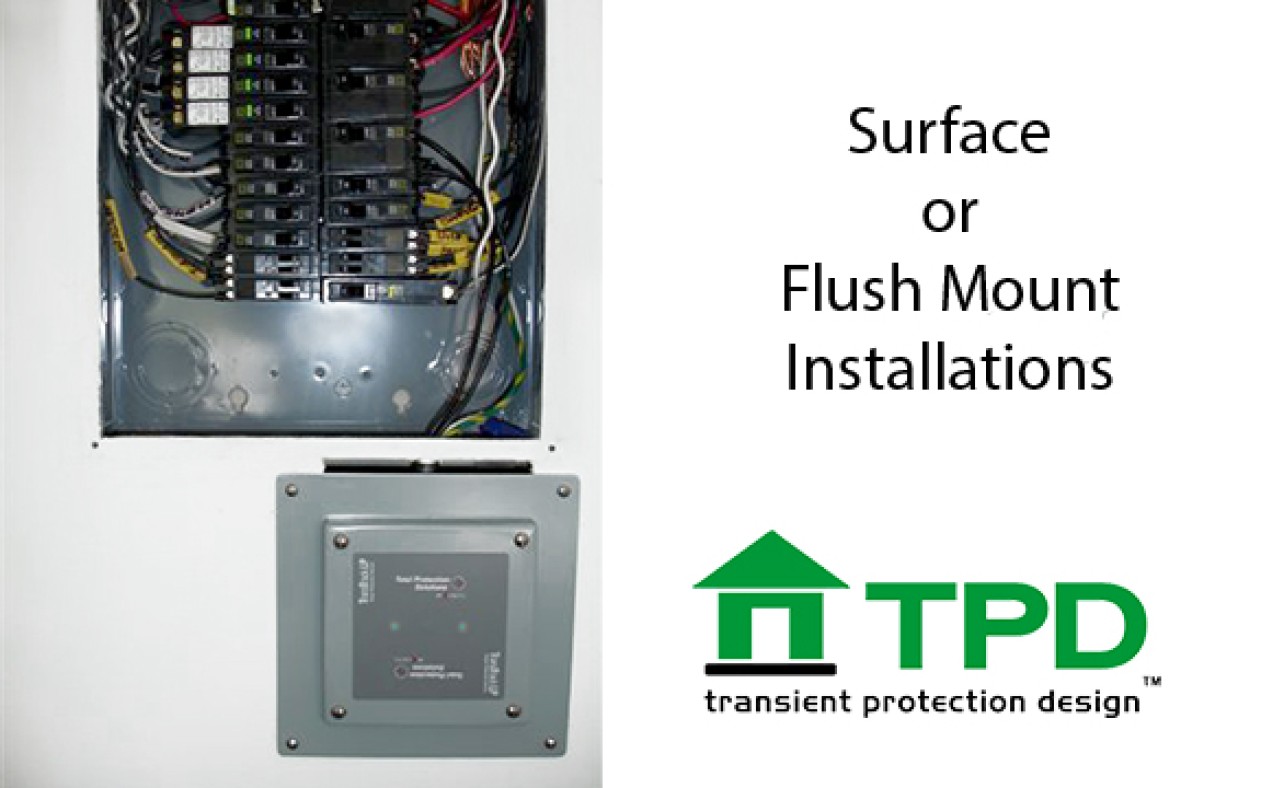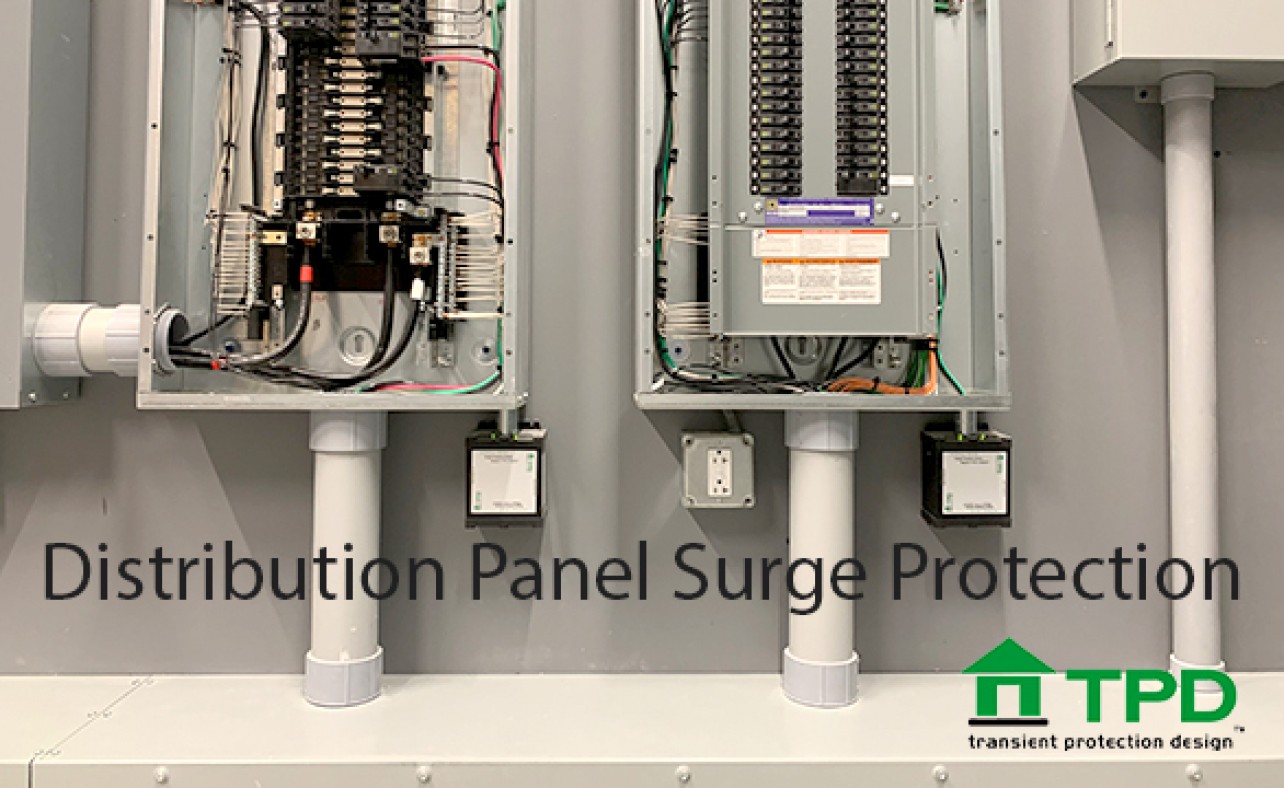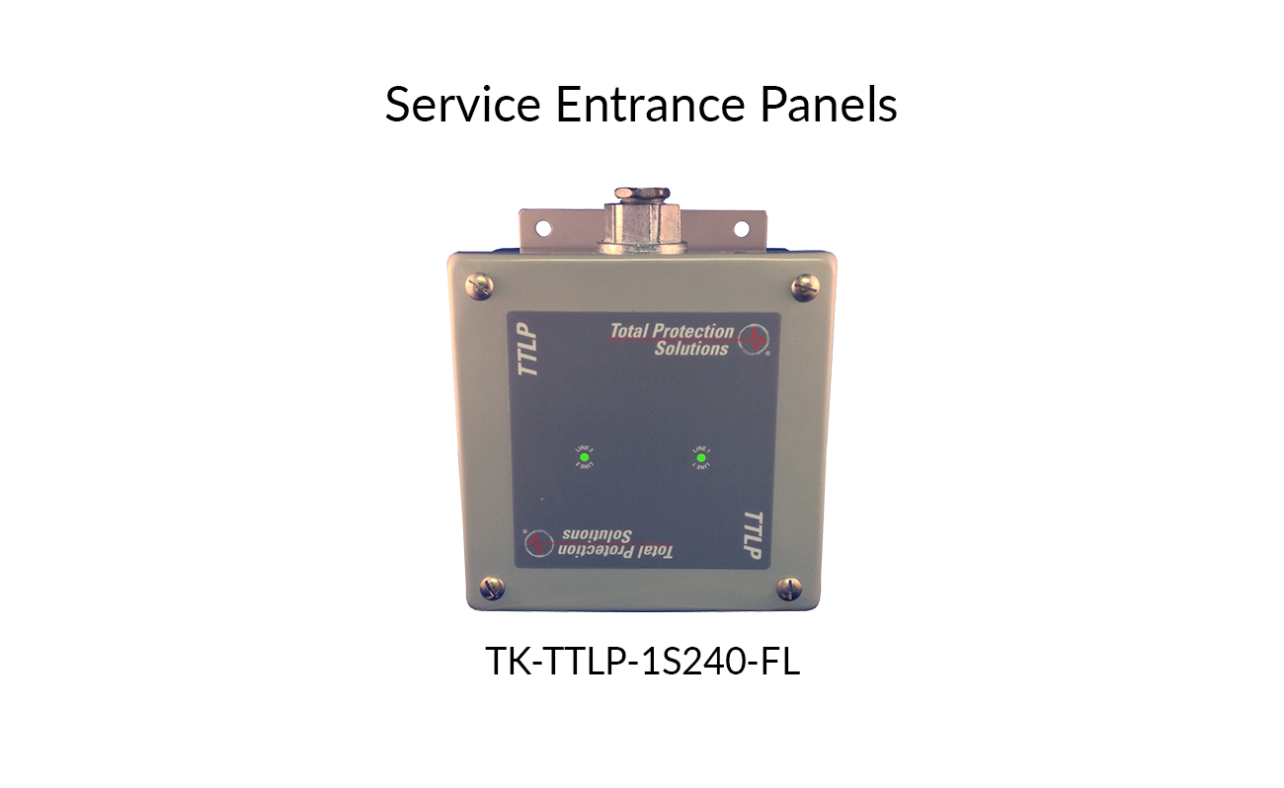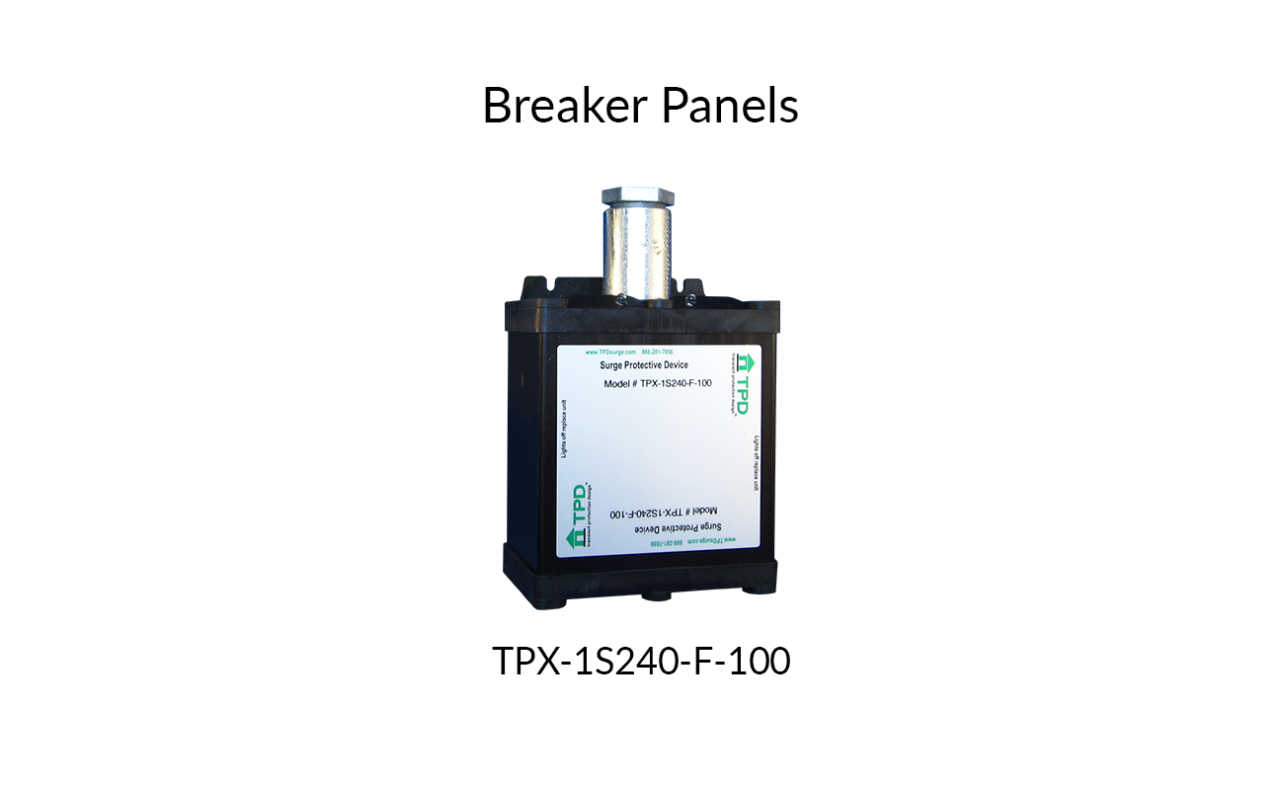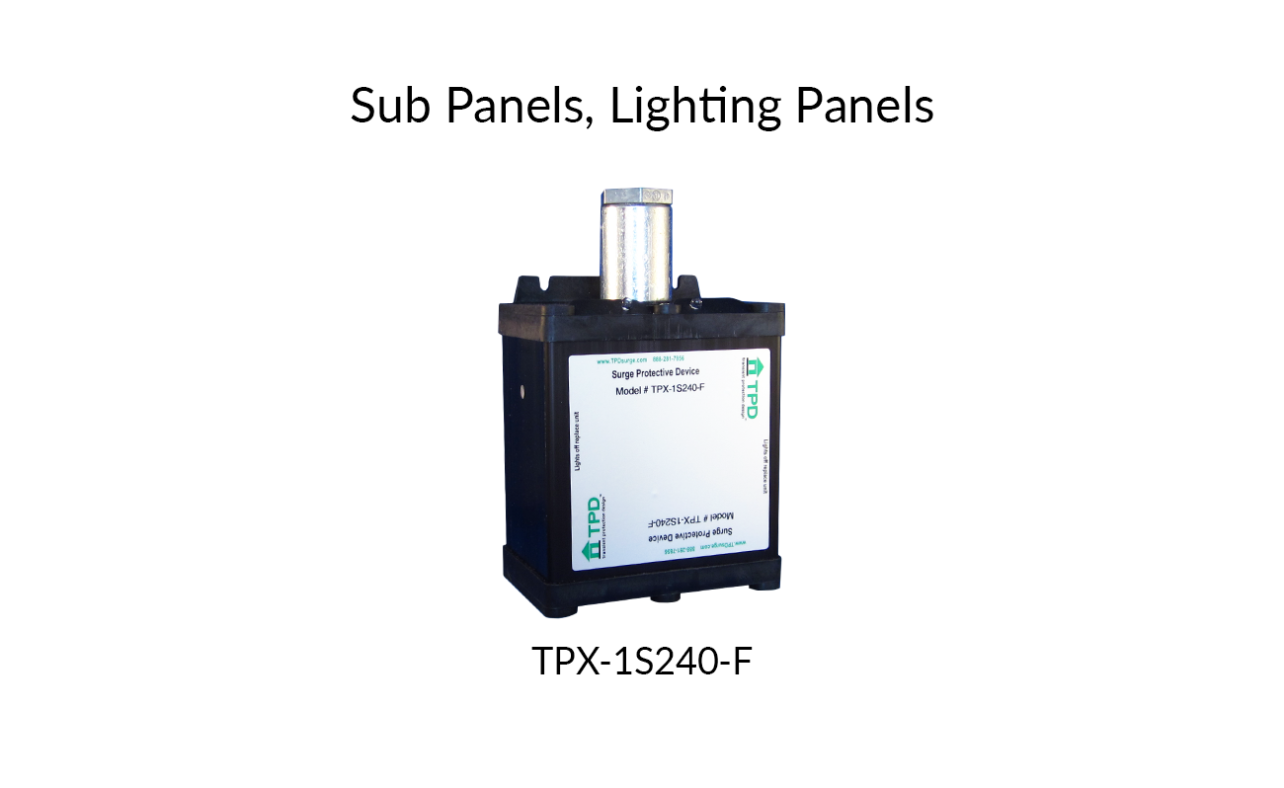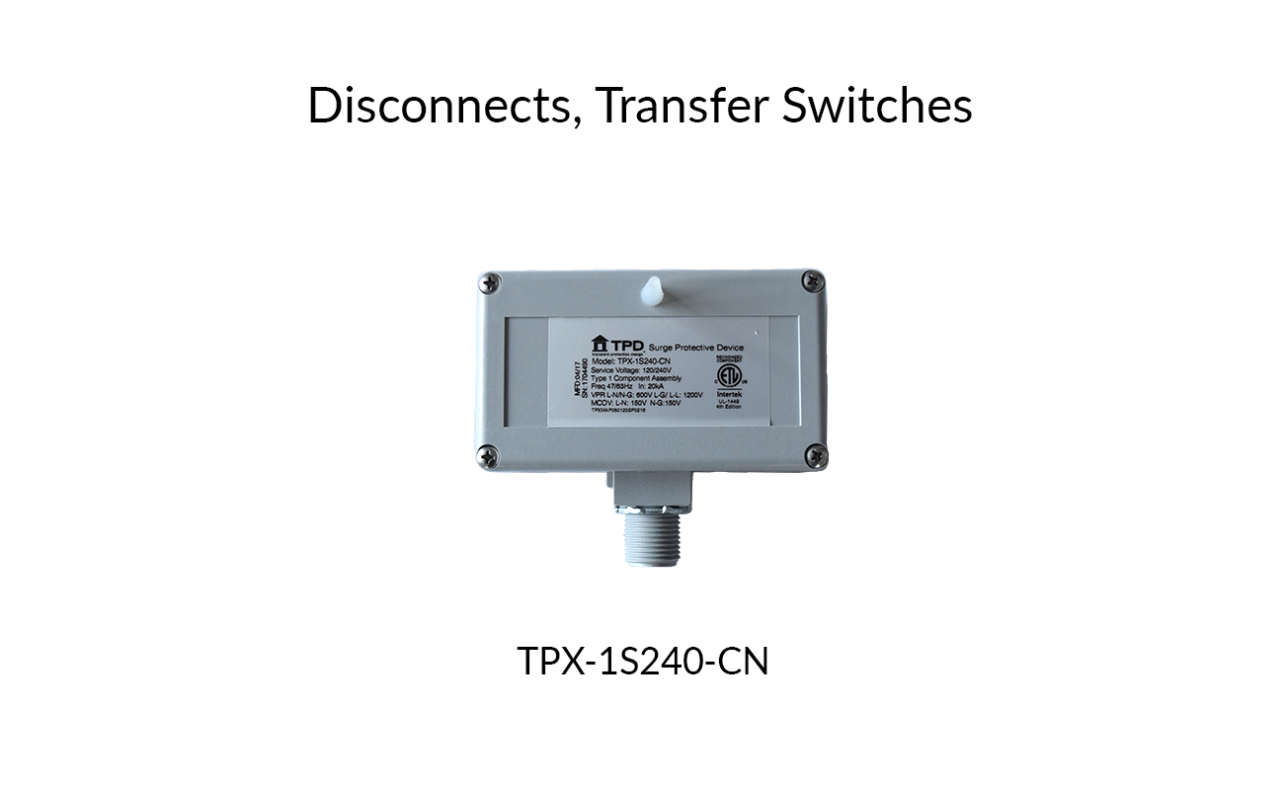Power Panel and Disconnect Surge Protection
Breaker panel surge protection from TPD: the ultimate surge protection solution for your power panels. Our advanced surge protectors are designed to surge protect and condition power for all service panels, breaker panels, sub panels, lighting panels, and disconnects from voltage spikes and surges. With our top-of-the-line surge protection technology, you can ensure the longevity and reliability of all power panels. Invest in peace of mind and secure your electrical infrastructure with our trusted surge protectors today.
TK-TTLP-1S240-FL Service Entrance Panels
TPX-1S240-F-100 Breaker Panels
TPX-1S240-F Sub Panels, Lighting Panels
TPX-1S240-CN Disconnects, Transfer Switches
TPD eliminates transients & surges
which account for 85% to 95% of all
power issues, being the most common
and significantly the most damaging.
How To Surge Protect Power Panels and Disconnects
Surge Protect Service Entrance Panels: TK-TTLP-1S240-FL
This will give the entire building a primary layer of surge protection with a lifetime warranty.
Surge Protect Breaker Panels: TPX-1S240-F-100
Surge protection and EMI/RFI filtration for each breaker panel. Protect from external surges such as lightning and grid switching in addition to internal surges. Surges and transients are generated by equipment within the building such as elevators, motors, and heating and air conditioning systems, all of which contribute to power disturbances.
Surge Protect Sub Panels: TPX-1S240-F
Surge protection and EMI/RFI filtration for each sub panel. Protect from external surges such as lightning and load switching in addition to internal surges. Staged protection provides an extra layer of surge protection and additional filtering for sensitive electronic loads.
Surge Protect Lighting Panels: TPX-1S240-F
Surges can find their way into any system from any direction. Surge protection is required at the lighting panel to ensure adequate protection for the lighting system, including processor and lighting circuitry.
Surge Protect Disconnects and Transfer Switches: TPX-1S240-CN
Some equipment such as HVAC equipment and transfer switches not only need protection for their own electronics but require protection so it does not effect the rest of the building.
Installation Notes
All units are weatherproof and can be installed indoor or outdoor.
All units are internally fused with #10 wire. Surge protectors can be installed to any spare breaker. Typically, a 15, 20, or 30 amp breaker or direct to system if no breaker is available. A tandem breaker can also be used if a panel is full.
Flush Mounting Options
TTLP comes standard with a flush mount trim ring
To flush mount TPX units, please order TPX-FMK45
The Importance of Surge Protection for All Power Panels and Disconnects
Preserving Electrical System Integrity
Breaker panels are the central hub of electrical distribution, controlling power flow throughout homes and businesses. TPD surge protection shields against electrical damage, ensuring the integrity of the electrical system. Whether you're at home or in a commercial setting, TPD surge protection guarantees a reliable and safe supply of electricity.
Protecting Valuable Equipment
Electrical systems encompass valuable components, including appliances, electronics, and machinery. Surge-induced damage can lead to costly repairs or replacements of these components. TPD surge protection reduces the risk of electrical damage and extends the lifespan of your electrical equipment in both residential and commercial applications.
Ensuring Safety
In both residential and commercial environments, electrical safety is paramount. Surge-induced failures can pose safety hazards, including electrical fires or equipment malfunctions. Transient Protection Design breaker panel surge protection plays a pivotal role in maintaining a safe electrical environment for both residents and employees.
Cost Savings
Repairing or replacing electrical equipment can strain budgets. TPD surge protection acts as a barrier against electrical damage, mitigating the risk of unexpected repair expenses. Whether it's optimizing your home's electrical system or ensuring the productivity of commercial operations, TPD surge protection contributes to cost savings.
Operational Continuity
In commercial settings, uninterrupted power is critical for various operations, including machinery, lighting, and IT infrastructure. Surge-induced failures can disrupt business activities, impacting productivity and customer satisfaction. TPD breaker panel surge protection ensures operational continuity, ensuring that businesses remain productive and operational.
Environmental Responsibility
Electrical systems are essential for various environmental control systems. Surge-induced equipment failures can result in increased energy consumption and waste. TPD surge protection helps maintain the resilience of electrical equipment, aligning with sustainability goals and ensuring the reliability of environmental systems.
Transient Protection Design surge protection for breaker panels is essential for preserving electrical system integrity, protecting valuable equipment, enhancing safety, achieving cost-efficiency, ensuring operational continuity, and promoting environmental resilience in both residential and commercial applications. It provides peace of mind, reliability, and a stable supply of power for homeowners and businesses alike, ensuring that electrical systems remain safe, efficient, and free from disruptions. Our quality panel mount suppressor with enhanced filtering should be part of any project and will provide the building owner with a quick return on investment.
How It Works
The service entrance suppressor takes the extremely high voltage and current of an externally generated surge or lightning impulse and reduces it down to a much lower level (e.g. per IEEE C62.41-2005, the peak values for a Location Category C Combination Wave are 10,000V/10,000A). Then, the suppressor on the sub panel acts as the final stage to further reduce the externally generated surge down to a negligible level. And, if the panel mount suppressor also has an Enhanced Transient Filter, the filter will continuously work to clean up all of the internally generated ring wave transients that adversely affect electronics, whether located in HVAC controls, LED drivers, digital controls for appliances, lighting and home automation systems, or computers, printers, TVs, stereos (and all other consumer electronics).

